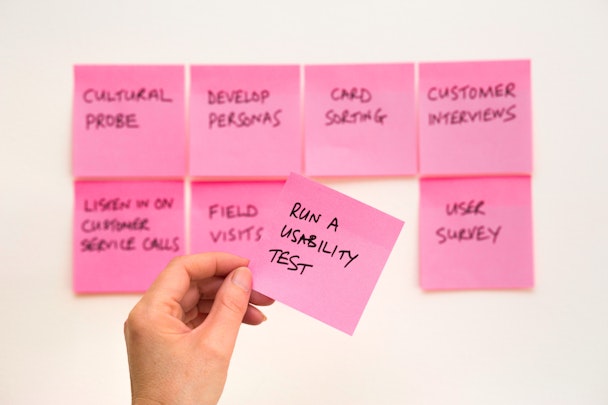Reframing failures as opportunities: how to foster a test-and-learn environment
On the beauty of hyper-measurability and seeing inaccuracies as data points, Isabella Smith of Impression advocates for a test-and-learn mentality among teams.

A test-and-learn mentality can enrich every stage of your marketing strategy. / David Travis
Don’t worry, this isn’t a motivational post about how to get through tough periods of life and come out the other side stronger. Instead, I want to discuss how your marketing team’s appetite for testing and learning could be the turning point for whether you are able to achieve long-term success.
Marketing strategies are inherently heavily researched and data-driven predictions for what we think will resonate with our customers, and what will ultimately drive business results. However, the other side of this coin is the necessity to understand whether your prediction or hypothesis is correct, and if not then why?
Advertisement
Testing = data = insights = better recommendations = increased performance
Even if our hypothesis weren’t accurate, it doesn’t mean the time and budget spent on it are wasted. Understanding what doesn’t work is as useful in getting you closer to understanding what will work. Understandably, some teams are reluctant to engage in risky tests in case this results in a loss of budget with no positive impact on performance, however, this approach will be limiting your ability to optimize your strategy as well as you could be.
Promoting a courageous test and learn culture within your team will mean the learn element is significant, regardless of whether it is a positive or negative one. Learnings equal more data, which equals more insight, which equals better recommendations, which equals better performance.
By reducing the pressure to only engage in tests we will have a positive outcome and we free up time to enable more creative testing plans. Recommending innovative activations which haven’t been done before will potentially open up your most impactful tests. After all, with no risk comes no reward.
How do you foster a test-and-learn environment?
The beauty of digital is the hyper measurability; the ability to dive into the data to see exactly where performance has been driven from. Alongside this, the real-time aspect means we can be building this understanding right from the beginning of this campaign. These features create the ideal foundations for a courageous test and learn the culture, as no test is one click away from being paused if the results are not what is needed.
The benefits of test and learn are only realized if you have a robust measurement framework in place. However, tests are meaningless if there isn’t a clear benchmark of what a successful test looks like and what an unsuccessful test looks like. Building a holistic framework with your business objectives as the north star will generate meaningful KPI metrics for the team and key stakeholders.
This wider view is a necessary foundation for any marketing strategy, but it needs to be adapted for each test you are trialing. Have you clarified which KPIs you are looking to measure? And do you have a target or a benchmark for a successful campaign?
Leaning on historical data performance is a good place to start or gathering benchmarks from similar tests across similar industries. With this in place, your evaluation stage will be uncomplicated and avoid any room for subjectivity. This should encourage stakeholders to get on board with your testing plan, as they will have confidence that you will be able to report back in a meaningful way to the business.
Advertisement
A centralized approach
With the depth of data we have access to in the world of digital, hypotheses for tests are sparked all the time – which is a good position to be in. However, transforming these ideas into an actionable plan can be the falling down point.
A useful technique to start this is to prioritize your tests based on what is most important to you and the team. Plotting your tests on a simple quadrant graph measuring impact and difficulty should highlight where the quick wins are, alongside where you may need to spend some time implementing the bigger-impact, higher-difficulty tests.
Getting all the key stakeholders together to do this will help to get buy-in to the final product: your testing plan. It gives you the information required to convert your testing ideas into a time-bound roadmap, which prioritizes the tests in which the team is most invested.
Suggested newsletters for you
Your roadmap can be used as a measurement tool as well as for future planning. Ensuring your measurement and reporting is recorded in the roadmap for each test will not only keep it clear and concise, but it will also help promote a circular approach, as your learnings from each test can then inform your future tests.
In summary: it can be easy to fall into the trap of doing the same thing over and over again, avoiding trialing new ideas because of the fear of failure. But promoting a bolder approach will likely result in better outcomes in the long run, by pushing the boundaries of your marketing strategy. To achieve this, your team needs to live and breathe a healthy test and learn culture and to see each result as useful learning on your road to performance success.
Content by The Drum Network member:

Impression
We are Digital Growth Specialists helping ambitious brands push boundaries and drive impact. We define and deliver integrated digital strategies that transform our...
Find out more
